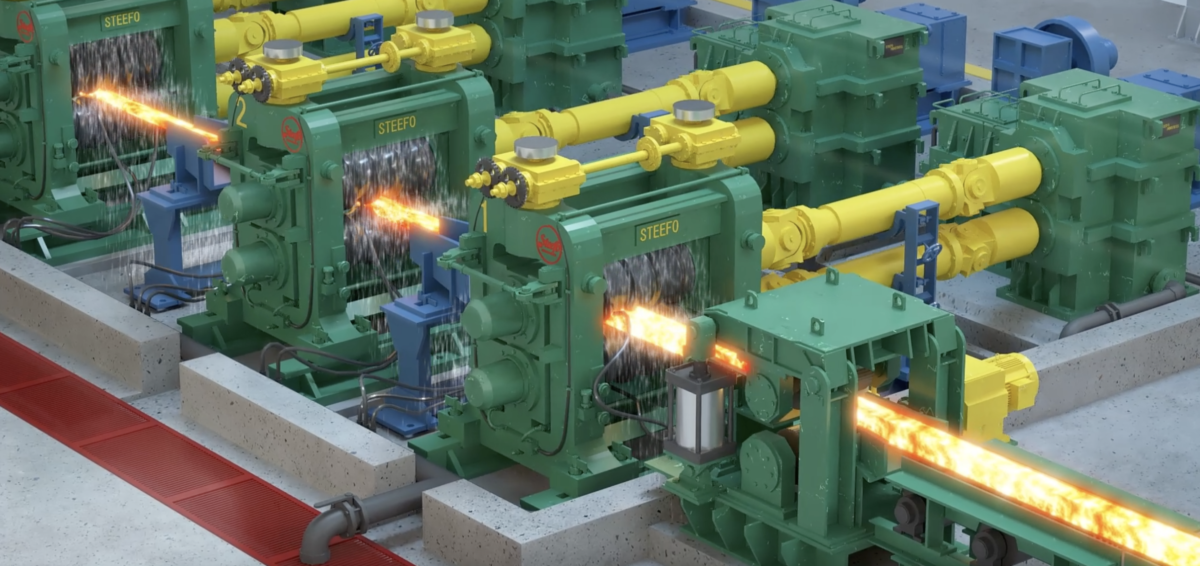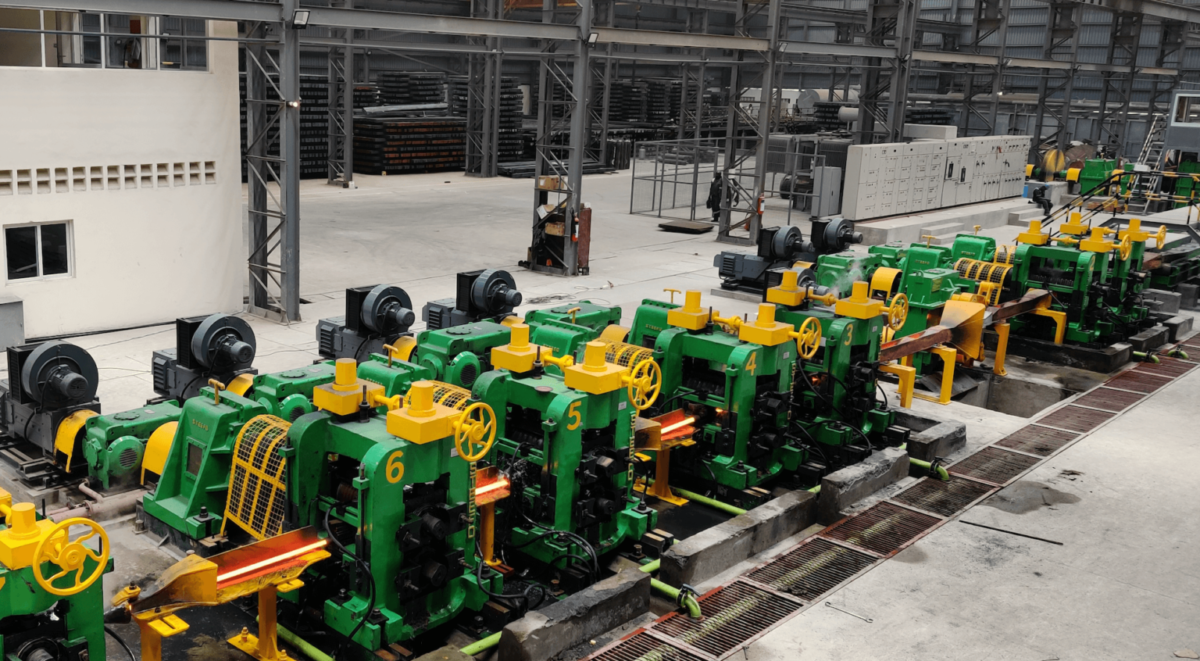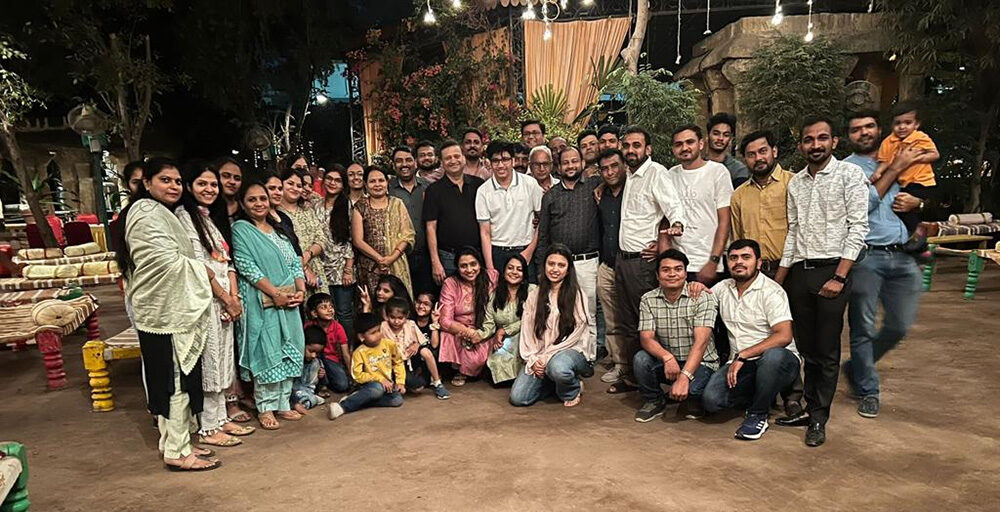Steel rolling mills play a crucial role in shaping industrial economies, supplying the backbone materials for infrastructure, construction, automotive, and energy sectors. Their impact extends beyond production, significantly influencing local and global markets through employment generation, industrial growth, and supply chain expansion. India, particularly in regions like Gujarat, has emerged as a key player in the steel rolling industry, driven by cutting-edge rolling mill machinery and advanced manufacturing processes. As demand for high-quality steel products continues to rise, steel rolling mills remain a cornerstone of economic development, fostering both regional progress and international trade.
Local Economic Contributions of Steel Rolling Mills
Job Creation & Workforce Development
One of the most significant contributions of steel rolling mills to local economies is employment generation. The industry supports thousands of jobs in manufacturing, engineering, logistics, and maintenance, providing stable livelihoods for skilled and semi-skilled workers.
- Manufacturing & Production Jobs: Steel mills employ technicians, machine operators, and quality control specialists to oversee the rolling process and ensure high production efficiency.
- Logistics & Distribution: Transportation of raw materials and finished steel products creates numerous opportunities in trucking, warehousing, and supply chain management.
- Engineering & Maintenance: Skilled professionals are required to operate and maintain advanced rolling mill machinery, ensuring smooth and efficient operations.
Beyond direct employment, steel mills also contribute to workforce development through skill enhancement programs and vocational training. Many rolling mills in Gujarat collaborate with technical institutes and government initiatives to provide specialised training, ensuring a steady pipeline of skilled workers for the industry.
Infrastructure Growth & Industrialisation
The expansion of steel rolling mills is closely linked to the growth of key infrastructure sectors, including construction, transportation, and energy. These industries rely heavily on steel for bridges, roads, pipelines, and high-rise buildings, driving demand for rolling mill products.
- Construction & Real Estate: Steel reinforcement bars, beams, and sheets are fundamental to modern building projects, creating a direct link between steel mills and urban development.
- Transportation & Automotive: The production of railway tracks, shipbuilding components, and vehicle frames depends on precision-rolled steel, boosting industrial output.
- Energy Sector: Steel is essential for the manufacturing of power plants, wind turbines, and transmission towers, reinforcing the role of rolling mills in energy infrastructure.
Additionally, steel mills contribute to regional economic clusters, attracting ancillary industries and encouraging industrialisation in their surrounding areas.
Small & Medium Enterprises (SMEs) Growth
The presence of steel rolling mills stimulates the growth of small and medium enterprises (SMEs) by fostering supply chain integration and local vendor development.
- Raw Material & Component Suppliers: Local businesses supplying scrap metal, lubricants, and machine parts benefit from the growing steel industry.
- Machining & Welding Services: The demand for fabricated steel components supports allied industries like machining, welding, and precision engineering.
- Transportation & Logistics: SMEs involved in trucking, shipping, and warehousing thrive as steel production increases transportation needs.
By strengthening SME networks, steel mills contribute to economic diversification and long-term industrial sustainability, making them a pivotal force in regional economic growth.
Global Market Influence of Steel Rolling Mills
Steel Demand & Trade
Steel is a fundamental component in global industries, driving demand for steel rolling mills across international markets. The construction, automotive, and energy sectors rely on high-quality rolled steel products for infrastructure projects, vehicle manufacturing, and power generation. As urbanisation and industrialisation accelerate worldwide, the need for advanced mill machinery continues to grow.
India, particularly hubs like Gujarat, has become a key exporter of rolled steel products, contributing to international trade. The presence of a strong rolling mill industry in Gujarat enhances the country’s competitiveness, allowing businesses to supply steel for global infrastructure development. However, trade policies, tariffs, and international regulations significantly impact export opportunities, requiring manufacturers to stay agile and compliant with evolving standards.
Price Fluctuations & Economic Stability
Steel prices are highly dynamic, influenced by global supply and demand, production costs, and geopolitical factors. Steel rolling mills play a vital role in market stability by adjusting production levels to meet demand fluctuations.
- Raw Material Availability: The cost and availability of iron ore, coal, and scrap metal directly impact steel prices, affecting the profitability of rolling mills.
- Geopolitical Factors: Trade restrictions, tariffs, and international conflicts can disrupt supply chains, leading to price volatility in global steel markets.
By investing in advanced rolling mill machinery and efficient production techniques, manufacturers can optimise costs and mitigate market uncertainties, ensuring steady economic contributions.
Technological Advancements & Sustainability
The steel industry is undergoing a transformation with innovations in energy-efficient rolling processes. Modern steel rolling mills are adopting automation, artificial intelligence, and green technologies to enhance productivity and reduce environmental impact.
- Energy-Efficient Rolling: Advanced machinery reduces energy consumption, lowering production costs while improving sustainability.
- Sustainable Steel Production: Recycling and waste reduction initiatives support a circular economy, minimising environmental impact while maximising resource efficiency.
As global industries prioritise sustainability, steel mills that embrace green technologies will have a competitive edge and shape the future of the global steel market.
Steel Rolling Mills: Challenges & Opportunities
Supply Chain Disruptions & Market Volatility
The global steel industry is highly sensitive to economic fluctuations, geopolitical tensions, and trade policies, all of which impact steel rolling mills. Supply chain disruptions, caused by economic downturns, tariffs, and trade restrictions, create uncertainty in raw material availability and transportation logistics.
- Economic Downturns: During recessions, reduced infrastructure and manufacturing activities lead to lower steel demand, affecting mill operations and profitability.
- Tariffs & Trade Barriers: Import-export restrictions imposed by governments may increase production costs, making it challenging for rolling mills in Gujarat and other regions to remain competitive in global markets.
- Raw Material Shortages: Dependence on iron ore, coal, and scrap metal imports can disrupt production if global supply chains face bottlenecks.
To mitigate these risks, businesses must adopt flexible procurement strategies, explore alternative supply sources, and leverage digital solutions for improved inventory management.
Green Steel & Carbon Emission Reduction
The steel industry is under increasing pressure to reduce its carbon footprint, pushing steel rolling mills to adopt sustainable practices. Governments and international organisations are introducing stricter environmental regulations, requiring manufacturers to transition toward low-emission steel production.
- Energy-Efficient Rolling Mill Machinery: Investing in automation and AI-driven rolling processes can significantly reduce energy consumption and waste.
- Sustainable Raw Materials: The use of recycled steel and alternative energy sources like hydrogen-based production is gaining traction.
- Regulatory Compliance: Meeting carbon reduction targets will be essential for mills to maintain market access and secure government incentives.
Investment & Expansion Strategies
Despite challenges, steel rolling mills have substantial opportunities for growth, especially in emerging markets where infrastructure development is booming.
- Expansion in Developing Regions: Countries in Africa, Southeast Asia, and the Middle East present lucrative markets for steel manufacturers.
- Strategic Partnerships & Mergers: Collaborations with technology providers and steel producers can enhance operational efficiency and market reach.
By adopting innovative strategies, rolling mills across India can strengthen their position in both local and global markets, ensuring long-term success.
Partner with The Steefo Group for Stronger and Sustainable Steel Rolling Mills
In an evolving steel industry, choosing the right partner is key to long-term success. The Steefo Group, a leading name in steel rolling mills, combines cutting-edge rolling mill machinery with sustainable practices to drive efficiency, precision, and growth. Whether you’re looking to optimise production, reduce carbon emissions, or expand into new markets, we provide tailored solutions that give you a competitive edge.
With decades of expertise and a commitment to innovation, The Steefo Group helps businesses navigate industry challenges while embracing future-ready technologies. Our advanced rolling mills in Gujarat are designed to deliver high-quality steel products that meet global standards.
Join us in building a resilient and sustainable steel industry. Partner with The Steefo Group today and take your business to the next level. Contact us at +91 98240 76873 or drop a mail at marketing@thesteefogroup.com to explore customised solutions that align with your vision for excellence.









